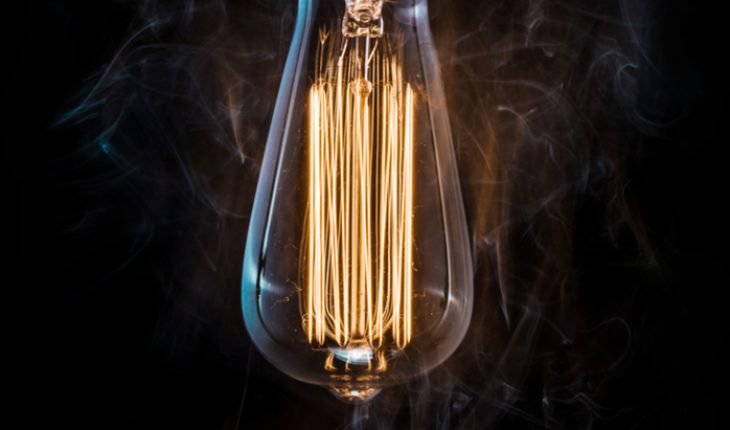Rebecca Wallersteiner takes a look at a new exhibition – ‘Electricity: The spark of life’ at the Wellcome Collection from 23rd February.
Wellcome Collection, Euston, on 23rd, a new exhibition, Electricity: The Spark of Life
Light is as important as the food we eat and the water we drink. Today about 1.1 billion people around the world still lack access to electricity and therefore have no proper lighting after darkness falls. This affects their ability to read, cook, travel safely, socialise and pursue an education. Opening at the Wellcome Collection, Euston, on 23rd, a new exhibition, Electricity: The Spark of Life, curated by Lucy Shanahan and Ruth Garde, will show how this invisible yet vital force is fundamental to human life and has captivated inventors, scientists and artists alike for centuries.
From the structure of the atom to the function of our brains, an electric charge is hidden within every object on earth. The exhibition will trace the story of mankind’s quest to understand, unlock and master the power of electricity. It will feature three new commissions by international artists John Gerrard, Camille Henrot and Bill Morrison, and bring together over 100 objects from ancient spark-inducing amber and early electro-static generators to radiographs, photographs, paintings, models and films. Electricity: The Spark of Life will cover three core themes – generation, supply and consumption.
our enduring fascination with electricity can be traced back to the ancient Greeks
‘Generation: The Great Invisible’ will show how the history of our enduring fascination with electricity can be traced back to the ancient Greeks and our early encounters with natural wonders, such as a burst of lightning or the mesmerising sight of the Aurora Borealis. It will consider how the late 18th century pioneers and philosophers looked to nature to reveal the physical presence of static electricity, and began to unravel its secrets. This included the study of electric fish, the complex bioelectrical experiments undertaken by Galvani (1737 – 1798), and the development of some of the very first devices designed to generate an electric charge.
Mary Shelley was directly inspired by Galvani’s reanimation experiments and was fascinated by the life-giving and death-dealing potential of electricity. In her renowned gothic novel Frankenstein, of which an early edition will be shown, she describes the awakening of the monster as infused with ‘a spark of being.’
Contemporary artist John Gerrard (b. 1974, Ireland), known for his innovative works in digital media, has also taken inspiration from Galvani in a new commission developed specially for this exhibition. ‘Supply: Wiring the World’ will consider how scientists, inventors and innovators of the 19th century were responsible for harnessing, converting and storing electricity, resulting in a power source that would transform the way we live.
Objects on display will include a voltaic pile (1800-1824) – one of the first batteries – made possible by Alessandro Volta, and ‘Barlow’s wheel,’ an instrument made in 1822 in order to demonstrate how electricity could be converted into movement.
In the late 1880s, the challenge of creating an electrical network resulted in the infamous ‘war of the currents’ involving Nikola Tesla and Thomas Edison in the USA. This fierce battle between competing energy companies over the use of direct current (DC) or alternating current (AC) raised questions about safety and the transportation of power over large distances.
In 1889, London’s first electricity network was established by Sebastian Ziani de Ferranti (1864-1930) who conducted a daring safety test by hammering into a live 10,000-volt cable at the world’s first high-voltage power station in Deptford. The original chisel and section of cable will be displayed alongside maps, satirical cartoons and London Underground posters. Original photographs from the 1920s will show numerous variations in the design of pylons as they became a feature of landscapes carrying electricity around the world and have subsequently developed an aesthetic appeal. Man Ray’s surrealist Electricité photographs commissioned by the electrical board in Paris in 1931 demonstrate how companies have sought to popularise its use.
Contemporary filmmaker Bill Morrison’s new work explores historical footage from the Electricity Council to consider the movement and networks of electricity and its profound interconnectedness with our daily lives. ‘Consumption: the silent servant’ will consider how electricity has come to define the modern world. It will feature a new work by the celebrated artist Camille Henrot, which will consider our energy-dependent lifestyles, as well as the relationship between humans, technology and the environment. This work will be shown alongside early examples of neon lighting and lightbulbs, photographs showing the ‘all-electric house,’ as well as tea towels produced by the Electrical Association of Women in the 1930s offering practical safety advice for the use of electricity in a domestic setting.
Developments in the application of electricity in healthcare will also be explored. This will include early advancements in electrotherapy, one of the first radiographs by Wilhelm Conrad Roentgen and advertisements promoting the supposed health-giving effects of electricity through new devices such as ‘electro-belts.’ At a time when we are more reliant on electricity than ever before, the exhibition will ask us to contemplate our ongoing relationship with electricity and imagine what the future might look like.
It is bound to create a huge spark!
Electricity: The Spark of Life Wellcome Collection, Euston, from 23rd February until 25th June 2017
183 Euston Road, London NW1 2BE; tel. 0207 611 2222
Gallery opening hours Mon- Gallery closed; Tues & Wed 10am – 6pm; Thurs 10am -10pm; Fri & Sat – 10am-6pm
- People’s Choice Victory for Down’s Syndrome Scotland Garden at Chelsea 2025 - 28th May 2025
- Cadogan: A Chelsea Family By Tamsin Perrett - 3rd May 2025
- Dream Worlds a new exhibition in Cambridge - 14th December 2024






